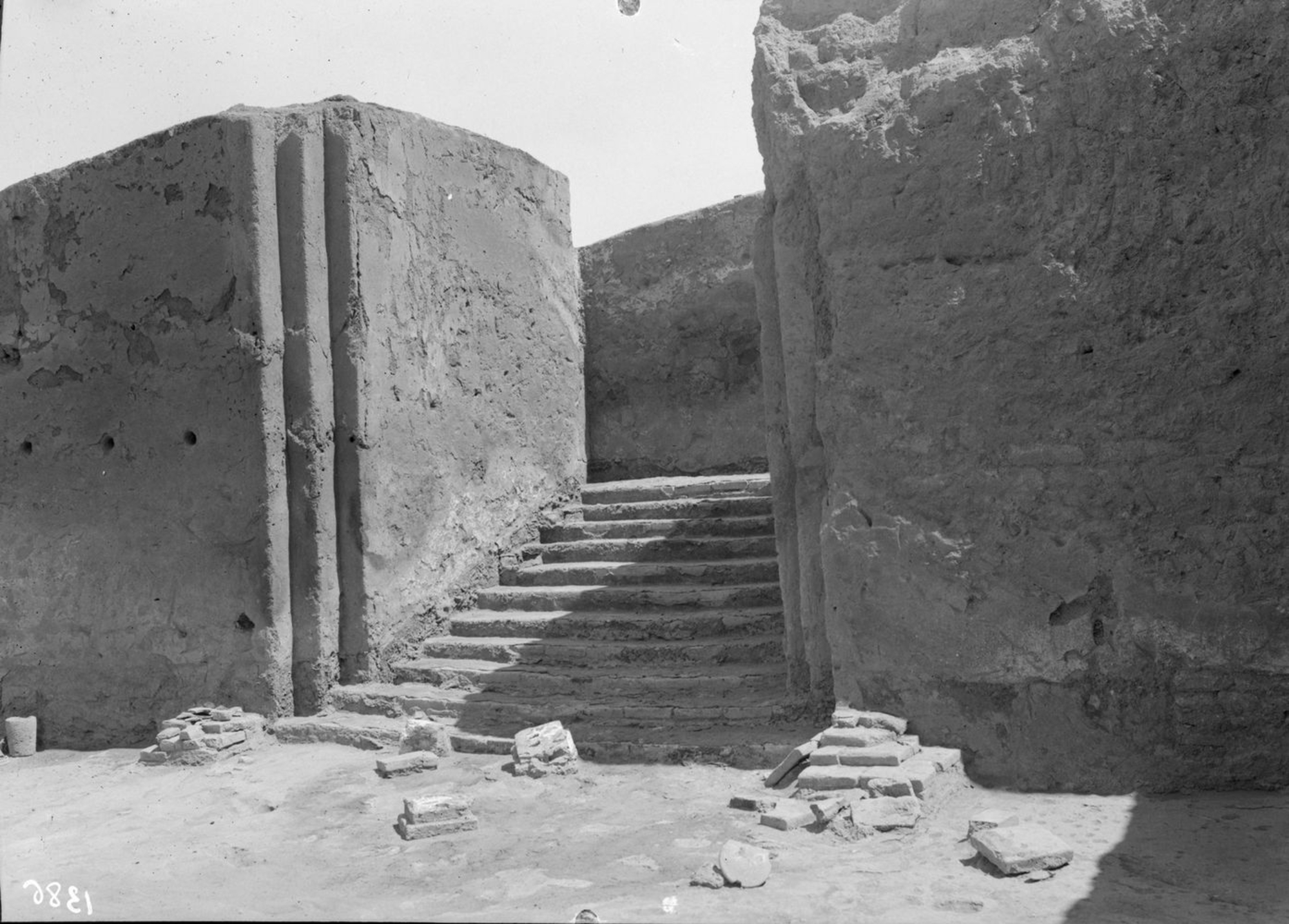
- Home
- The Great royal palace of Mari
- The archaeology of the palace
- Conservation of remains
As mud-brick architecture is highly fragile, it rapidly deteriorates when exposed to the elements, regardless of the quality of the excavation. For a century and a half, archaeologists paid little attention to the ultimate destruction of archaeological remains, which they believed was a necessary evil, since "the book of archaeology is destroyed as you read it”.
Covering the Sacred enclosure
André Parrot, who discovered Mari, was dismayed by the slow but inexorable disappearance of the Great Royal Palace he had excavated between 1935 and 1938. Among the finest examples of Mesopotamian palatial architecture and exceptionally well preserved, it had since literally been melting under the combined effects of the wind, rain and sun.
When he discovered the Sacred enclosure of the temple-manufacturing area dating from the mid-3rd millennium, no less well preserved than the Great Royal Palace, he refused to accept the programmed destruction of this exceptional new monument. He decided to found an Association for the Safeguarding of the Site of Mari and to use the funds to build a roof to protect the palace ruins. By 1974, the roof had been erected and the Sacred enclosure largely protected. Under the leadership of Jean-Claude Margueron, a rainwater drainage system was subsequently added to the central area.
The conservation of the Amorite palace
It then became clear that, if urgent action was taken in the area of the throne room and the papahum of the palace dating from the Amorite dynasties, it might still be possible to save the core of the building where the royal cult ceremonies were performed. They decided to retain the old wall cores and encase them in new mud bricks. The operation was almost complete when unrest broke out in 2011. The works had to be abandoned and it fell into ruin. This obviously represents a tragic failure. Nevertheless, it is right to attempt this type of protective response.


